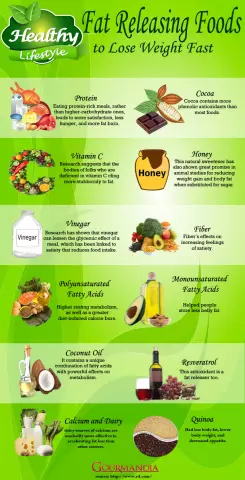- Author Rachel Wainwright [email protected].
- Public 2024-01-15 19:51.
- Last modified 2025-11-02 20:14.
Constipation Laxatives for the Elderly
The content of the article:
- Constipation in the elderly
- Indications and contraindications for taking laxatives
- Effective fast-acting laxatives
-
Drugs that increase the volume of intestinal contents
- Mucofalk (psyllium)
- Methylcellulose
-
Osmotic laxatives
- Lactulose
- Macrogol (Forlax, Microlax)
- Exportal (lactitol)
- Magnesium sulfate
- Emollient laxatives
-
Stimulant laxatives
- Guttasil
- Bisacodyl
- Stable
- How to choose the right medicine
- General recommendations
- Video
Constipation is a specific symptom of a number of diseases associated with a decrease in the number of bowel movements and a feeling of incomplete bowel movement. The disease occurs in every third person in the population over 65 years old. Elderly people need laxatives for constipation in more than 60% of cases.
This article is for informational purposes, it should be remembered that the treatment of constipation, first of all, depends on its cause, and therefore it should be selected and monitored by a doctor.

In old age, constipation is very common and requires not only drug therapy, but also lifestyle changes
Constipation in the elderly
In old age, constipation has a number of characteristics:
- It is associated with the natural aging processes of the large intestine (atrophic changes in the mucous membrane, slowing of peristalsis and weakening of the pelvic floor muscles), as well as weakening of the muscles of the anterior abdominal wall, which leads to a decrease in intra-abdominal pressure.
- A tendency to a chronic course of the disease and a low response to almost any treatment method (the problem is associated with natural irreversible anatomical changes in the intestinal wall).
- The ratio of saccharolytic (bifidobacteria, lactobacillus) and proteolytic (Proteus, Escherichia) intestinal flora is disrupted in favor of the latter. This leads to increased synthesis of substances, one of which is endotoxin, which has a general toxic and inflammatory effect.
- The formation of a vicious circle: a decrease in muscle tone - a slowdown in peristalsis - a delay in feces in the intestinal lumen - an increase in intraintestinal pressure - an exacerbation of dysbiosis or the occurrence of a number of other complications such as diverticulitis - an increase in constipation.
Indications and contraindications for taking laxatives
In addition to constipation itself, the elderly have special indications for the appointment of laxatives that are not associated with intestinal pathologies:
- myocardial infarction;
- severe forms of arterial hypertension;
- aneurysm and thrombosis;
- retinopathy;
- hernia.
In this case, laxative drugs are prescribed to relieve excessive stress with an increase in intra-abdominal pressure during bowel movements (at such moments there is a sharp jump in blood pressure).
There are also a number of indications when such drugs are indicated due to temporary disability (usually in bedridden patients):
- skeletal traction;
- postoperative period;
- plaster corset.
Contraindications to the appointment of funds in this group:
- abdominal pain syndrome of unknown etiology (including acute abdomen, peritonitis);
- gastrointestinal bleeding (external or hidden);
- paralytic intestinal obstruction (with extreme caution and with other types of obstruction);
- acute toxic and non-toxic megacolon.
Effective fast-acting laxatives
The classification of laxative drugs is presented in the table.
| Group | Mechanism of action | List of drugs (examples) |
| Increasing the volume of intestinal contents (voluminous) | The action is associated with an increase in the volume of feces, which stimulates the intestinal mechanoreceptors (stimulation of peristalsis). |
Dietary fiber of plant origin (cellulose, hemicellulose, lignin); flax seeds, plantain preparations (Mukofalk). |
| Osmotic | The mechanism of action is associated with an increase in osmotic pressure in the intestinal cavity (stretching of water into the lumen of the intestine and softening of feces). | Magnesium sulfate, sodium sulfate, Forlax, Sorbitol, Mannitol, Lactulose. |
| Emollients | Mostly plant substances that are not absorbed in the intestines, but envelop the feces, facilitating their passage through the intestines. | Vaseline oil, almond oil. |
| Stimulating | The action is mainly associated with irritation of the intestinal wall. | Anthraglycosides (rhubarb, buckthorn, senna preparations, Agiolax), diphenylmethane derivatives (Bisacodyl, Guttalax, Phenolphthalein), combined preparations Kafiol, Slabilen, Musinum, Agarol, castor oil. |
Below is a detailed overview of the different groups with a description of the most popular drugs.
Drugs that increase the volume of intestinal contents
These funds are effective, but have a less rapid effect compared to other groups. They do not have a direct effect on the work of the intestines, however, by increasing the volume of feces, they significantly stimulate the nerve endings in the intestinal wall. It is optimal to take them at the same time in the morning or at night.
For the effective action of this group of drugs, a sufficient water regime is shown (at least 1.5 liters per day). With concomitant arterial hypertension, careful control of pressure is indicated (additional water load often leads to an increase).
Mucofalk (psyllium)
The preparation of plant origin (the shell of plantain seeds), contains soft dietary fiber, which makes it possible to use it in elderly patients with a burdened history (ulcerative colitis, for example).
It contains several fractions, which increases the spectrum of action:
- fraction A - creates volume;
- fraction B - provides mucus formation;
- fraction C - is prone to rapid destruction and serves as an energy substrate for the intestinal microflora.
In addition, Mucofalk slightly reduces cholesterol and glucose levels (important in patients with arterial hypertension, atherosclerosis and type I diabetes mellitus). Serves as a prophylaxis for diverticular disease and colorectal cancer. The course is 10-20 g 2-3 times a day. The duration of treatment is not limited, since the drug has a minimum of side effects.
Reception does not depend on food.

Mucofalk is a laxative made from plantain seeds
Methylcellulose
The drug is often referred to as a food additive rather than a classic drug. It has limited use in the CIS. Refers to herbal substances, has no clear limitation in terms of use. Available in tablet form. Take 2 tablets daily.
Osmotic laxatives
Strong fast acting drugs. Features:
- They have no effect on receptor fields, which leads to a low level of addiction and the possibility of long-term use. There is a partial restoration of the normal functioning of the receptors (stabilization of peristalsis).
- The action of most drugs begins in the small intestine and is associated with the release of a large amount of fluid into its lumen (the development of artificial diarrhea). This effect is due to the presence in their composition of non-absorbed ions and molecules that create an osmotic gradient in the intestinal cavity and attract water from the blood plasma (isoosmotic pressure). In addition, they are able to retain fluid in the intestinal lumen, which ensures the softening of feces.
- Act in most cases within 6-10 hours from the moment of admission.
Lactulose
It is a disaccharide (fructose and galactose), which in the large intestine is fermented by bifidobacteria and lactobacilli to form short-chain fatty acids, which have an osmotic effect. The action is not associated with significant water loss and provides a mild effect (good for older people with bowel surgery, for example). The usual dose of the drug for adults is 15-45 ml for the first three days, and then decreases to 10-25 ml. The optimal time for taking is in the morning on an empty stomach. The course is selected depending on the cause of constipation and is strictly individual.
Macrogol (Forlax, Microlax)
A substance that is a derivative of polyethylene glycol. It provides an increase in the volume of feces and their softening due to binding with water molecules (the formation of hydrogen bonds between it and the components of the drug). Acts throughout the intestine. Not absorbed or metabolized in the gastrointestinal tract. It has no effect on the intestinal microflora, does not irritate the mucous membrane and does not remove ions from the body. The optimum concentration is reached within 24-48 hours. Not suitable for single use, long-term treatment is indicated.
It is especially effective in the elderly with a history of complications (diabetes mellitus, arterial hypertension, renal and hepatic failure). The classic dosage is 10-20 g once a day. It is recommended to drink in the morning on an empty stomach with meals.

Forlax is an osmotic laxative
Exportal (lactitol)
A distinctive feature - it begins to act in the large intestine. Simultaneously with osmotic, it has a probiotic effect. The daily dose is 20 g 1-2 times a day. Reception can be either long-term or one-time.
Magnesium sulfate
Like other salt preparations, it has a quick effect (stool 2-4 hours after ingestion). It begins to work at the level of the small intestine and often leads to the development of diarrhea due to the large amount of fluid drawn in. Unsuitable for long-term use, since it leads to a pronounced violation of water-salt metabolism (washing out of K and Na ions). The daily dose is 10-30 g 1 time per day in the morning on an empty stomach with plenty of warm water. For chronic constipation it can be used as an enema (dissolve 10-20 g of powder in 100 ml of water).
Emollient laxatives
This group of drugs is represented by various oils (vaseline, palm). Features:
- do not affect peristalsis;
- somewhat reduce the stress during bowel movements due to the enveloping properties;
- reduce the risk of anal fissures and bleeding;
- have hydrophilic and hydrophobic properties, which leads to a slight retention of water in the intestine.
It is especially often used in elderly patients who are on bed rest for a long time, as well as in patients in the early postoperative period.
Substances of this group (for example, liquid paraffin) are often used as constituent elements of folk remedies for the treatment of constipation, in this case decoctions, infusions, seed mixtures, etc. are added to them.

Vaseline oil - softening agent
Stimulant laxatives
The most relevant team group, the drugs have the following features:
They gradually become addictive, which leads to a decrease in the therapeutic effect (there is a need to increase the dose).
- Have more frequent and severe adverse reactions compared to other laxatives (in particular, severe electrolyte loss). The reason is that these funds are able to be absorbed into the bloodstream.
- Most of them have a double effect: secretory and irritating. The first effect is associated with the direct interaction of the components of the drug with intestinal cells (enterocytes), as a result of which a number of enzymes are activated that provide increased secretion of fluid and electrolytes in the intestinal lumen (phenomena of secretory diarrhea occur). The second effect is associated with irritation in the submucosal layer of nerve endings and, due to this, the release of a number of substances that stimulate peristalsis.
- A short-term intake (no more than 2 weeks) is indicated due to a relatively quick effect.
- A number of drugs have a mutagenic effect (in particular, senna drugs).
- Shown laboratory monitoring of the concentration of ions in the blood (especially potassium), when they decrease, the course of the corresponding auxiliary drugs is shown.
Guttasil
The drug of choice in the treatment of constipation in the elderly. Release form - solution. It begins to break down at the level of the large intestine (before that it is practically not absorbed). In addition to the main effect, it has a positive effect on the intestinal flora.
Relevant in the elderly with concomitant intestinal diseases (hemorrhoids, proctitis, anal fissures). It is unacceptable to be taken by people with hypersensitivity to the components of the drug and in acute pathologies of the gastrointestinal tract.
It is prescribed by mouth at 5-10 mg (15-25 drops) at night. The action begins 6-12 hours after administration. The course is determined by a specialist.
Bisacodyl
It is indicated for the elderly with a hypo- or atonic form of constipation; it is also prescribed in the early postoperative period. Available in the form of rectal suppositories. The usual dosage is 1-2 suppositories 1 time per day. The course of therapy is determined individually.

Bisacodyl - a stimulant laxative
Stable
It is used in older people, as it works well with a combination of sluggish intestinal motility and anal fissures or hemorrhoids. Available in the form of drops. Apply 20-30 drops once a day before bedtime.
In the treatment of constipation, preference is given to this group due to the effectiveness and relatively rapid achievement of a therapeutic effect.
How to choose the right medicine
When selecting effective and inexpensive medicines for older people, take into account:
- the leading cause of constipation;
- concomitant pathology and drugs that are taken to treat it;
- the initial state of the patient (walking, lying).
A combination of drugs of different groups is permissible. In the absence of a visible positive effect after two courses of therapy, a change in the group of the drug and the method of its use (enemas, tablets, solutions) are indicated.
General recommendations
With persistent constipation in the elderly, in addition to drug treatment, they should adhere to the general recommendations:
- adherence to a balanced diet dominated by plant foods (excluding spicy, fatty, smoked foods);
- sufficient water regime (at least 1-1.5 liters of water per day);
- sufficient physical activity (daily walks, swimming).
Video
We offer for viewing a video on the topic of the article.

Anna Kozlova Medical journalist About the author
Education: Rostov State Medical University, specialty "General Medicine".
Found a mistake in the text? Select it and press Ctrl + Enter.






